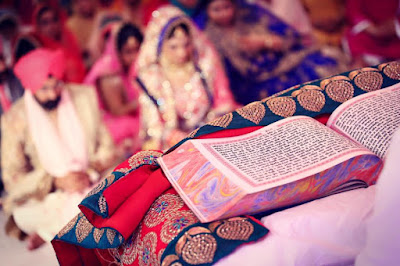INDIA-PAKISTAN BORDERS IN PUNJAB
India - Pakistan borders is locally known as International Border(IB). The international border runs between India
and Pakistan that separates the Indian states and the Pakistani four provinces. The border runs from the
Line of Control(LoC) ,which demarcates the Jammu and Kashmir from Pakistani-controlled Kashmir that lies
in the north, to the Zero Point between the Indian state of Gujarat and Sindh province of Pakistan which lies
in the south.
The state Punjab has three main borders those separates Punjab from Pakistan.
WAGAH BORDER
Wagah is a village and union council which is located in the Wagah Zone of Lahore, Punjab, Pakistan.Wagh is the
border that separates the India and Pakistan which is named after the place, the village Wagah. This town is famous
for the Wagah border ceremony,which also serves as a goods transit terminal. The rail line also passes through this
town which connects Pakistan and India. Wagah is located in 600 metres east of the border and lies on the Grand
Trunk Road between Lahore in Pakistan and Amritsar in India. The border is located 24 kilometres (15 mi) away from
Lahore and 32 kilometres (20 mi) away from Amritsar. It is located at 3 kilometres (1.9 mi) away from
WAGAH BORDER CEREMONY
The Wagah-Attari border ceremony takes place at the border gate,every day, two hours before sunset. The flag
ceremony is guided by the Pakistan Rangers and Indian Border Security Force (BSF). Flags of both the countries flies
high into the skies after the march.
Following India's building of a 360ft (110m) flagpole on the border in Attari, in August 2017, a 400ft (122m) flag
was established on the Wagah side. The flagpole in Wagah is considered to be the tallest in South Asia.
Wagah border is one of the major spots in Punjab Tourism. Many people from different states, countries visit here
to see ceremony at this border. It helps increase in the economy of Punjab. It is the major sightseeing that should
be included in one’s list while tour to Punjab.
HUSSAINIWALA BORDER
Hussainiwala border is situated in a village in Firozpur district in Punjab state, India. It lies at the banks of the Sutlej river.
The village is located on the border with Pakistan opposing the Pakistani village,Ganda Singh Wala.
Hussainiwala is the place of the National Martyrs Memorial, which states the site where Bhagat Singh, Sukhdev and
Rajguru,the martyr’s were cremated on 23 March 1931. It is also the cremation place of Batukeshwar Dutt, who
was also involved in bombing the Central Legislative Assembly with Bhagat Singh. After the Partition of India and
Pakistan, the cremation site became the part of Pakistan but on 17 January 1961 it was again declared to be the part of India in interchange of 12 villages near the Sulemanki Headworks (Fazilka).
An annual fair is organized at the memorial on 23 March in concern with the anniversary of Bhagat Singh's death.
The border crossing is closed for travelers but the flag retreat ceremony is still organized daily. Until 1970,
the road crossing between India and Pakistan was a trade route for truckers that used to import the Kandahari Angoor
SULEMANKI BORDER
The BSF and Pakistani Rangers, at a flag meeting on the Pakistan side, conduct the Retreat (flag-lowering
ceremony) at the Sadiqi joint check post (JCP) in Fazilka district in the same fashion as at Wagah in Amritsar
and Hussainiwala in Ferozepur.
Till now, a parade was conducted by the two countries in their respective territories on either side of the
International Border. Now, the ceremony helds on Zero Line by BSF personnel and Pak Rangers jointly.
This has expected to increase the footfall of visitors.
To witness the parade, hundreds of visitors visit the Sadiqi post every day. It is observed that there is a huge
rush at the Sulemani post in Pakistan’s territory. This place is considered as one of the best places in
Punjab to visit as this spot is the major eyecatcher to the tourists and as well enhanced the growth in economy of Punjab.
The construction activity, including the raising of bunkers is only allowed to be carried out up to 150 metres on either side of Radcliffe Line. Also, security measures are strong for harvesting and it is ensured that no
































